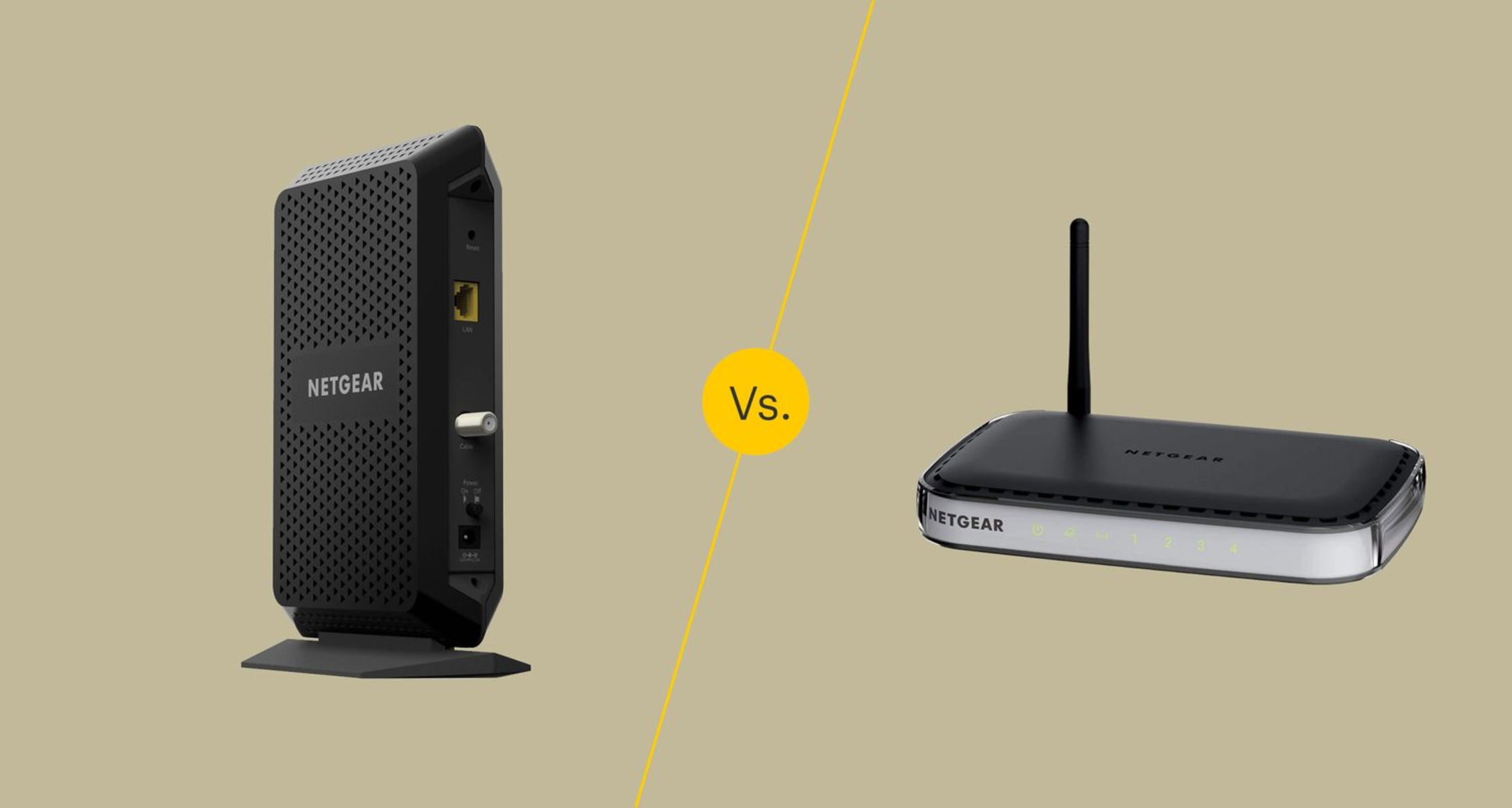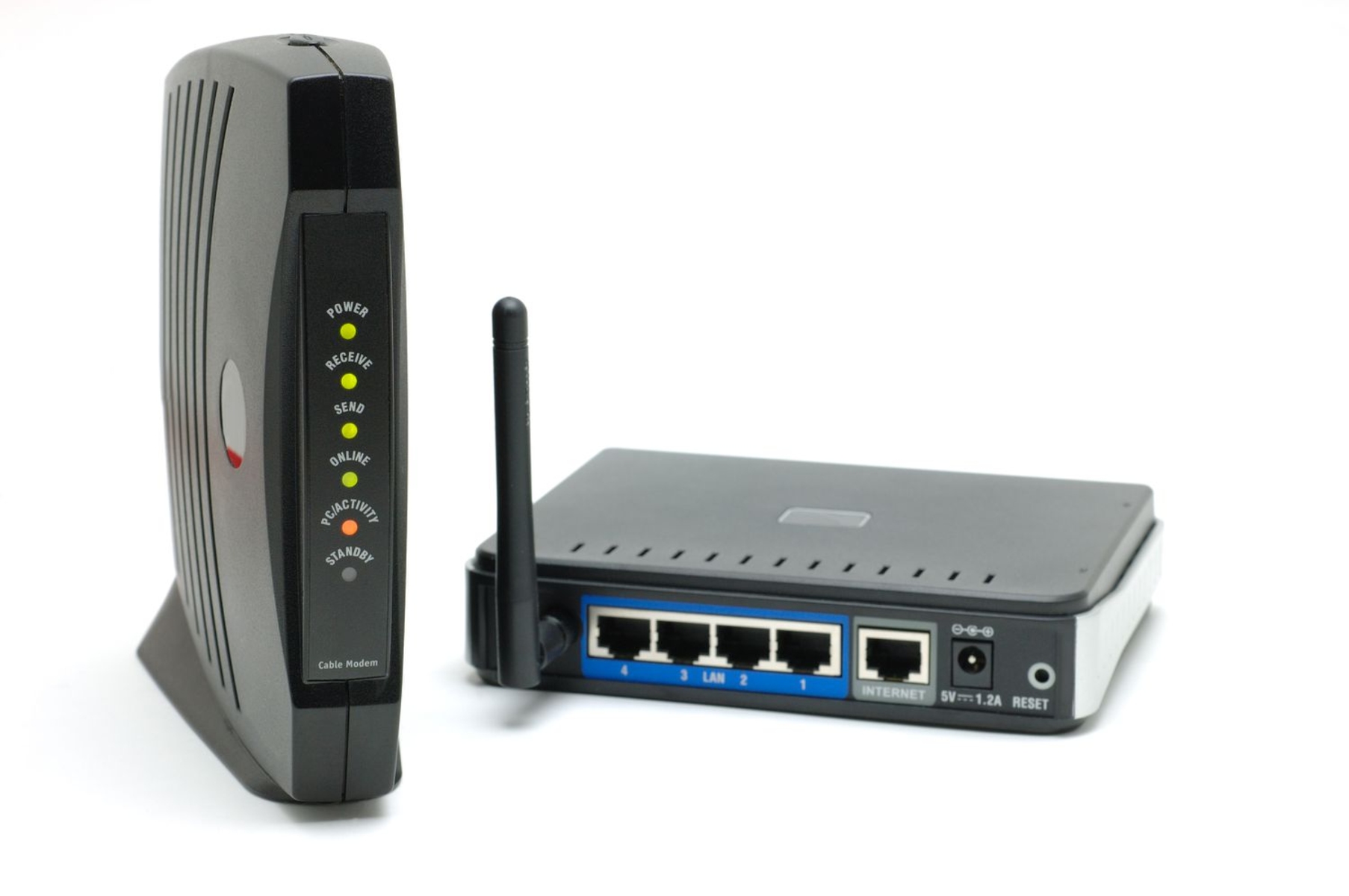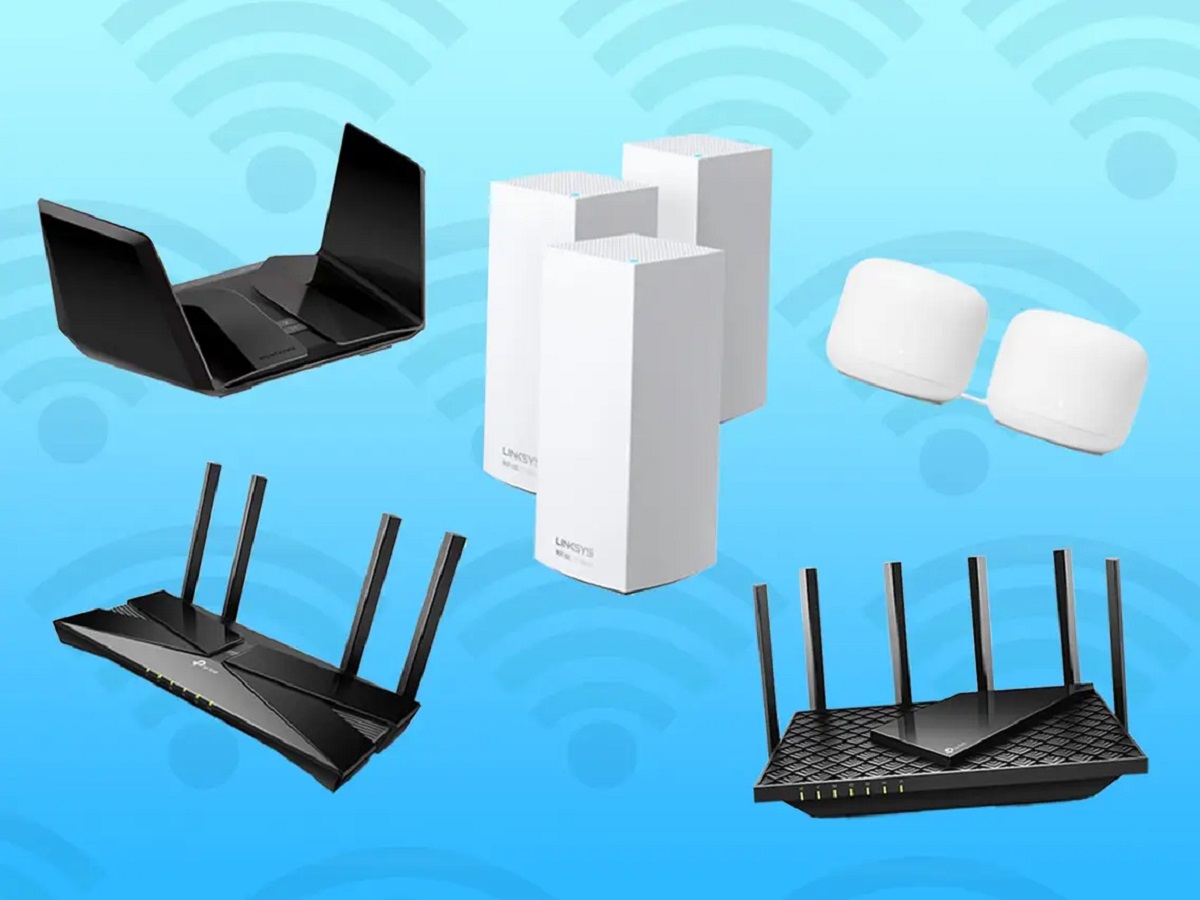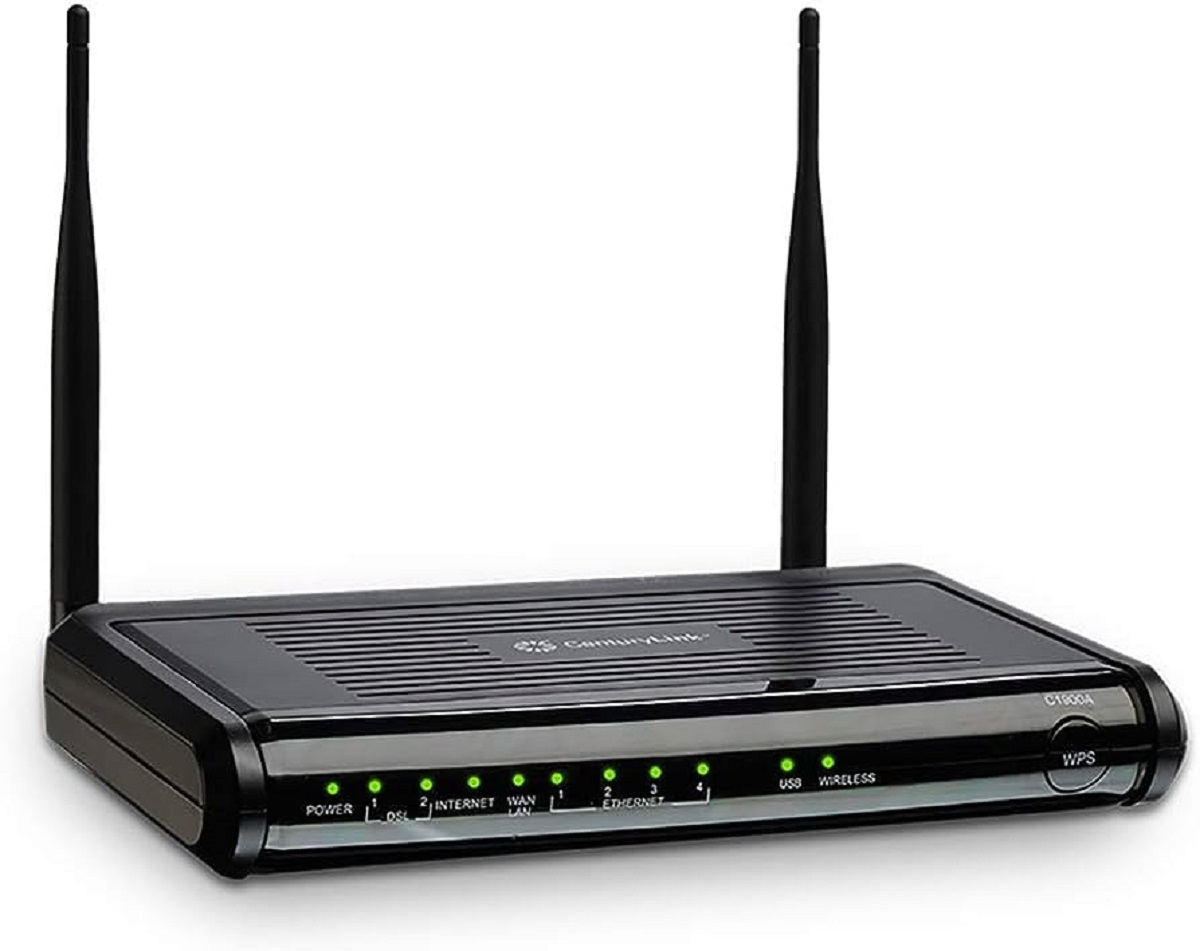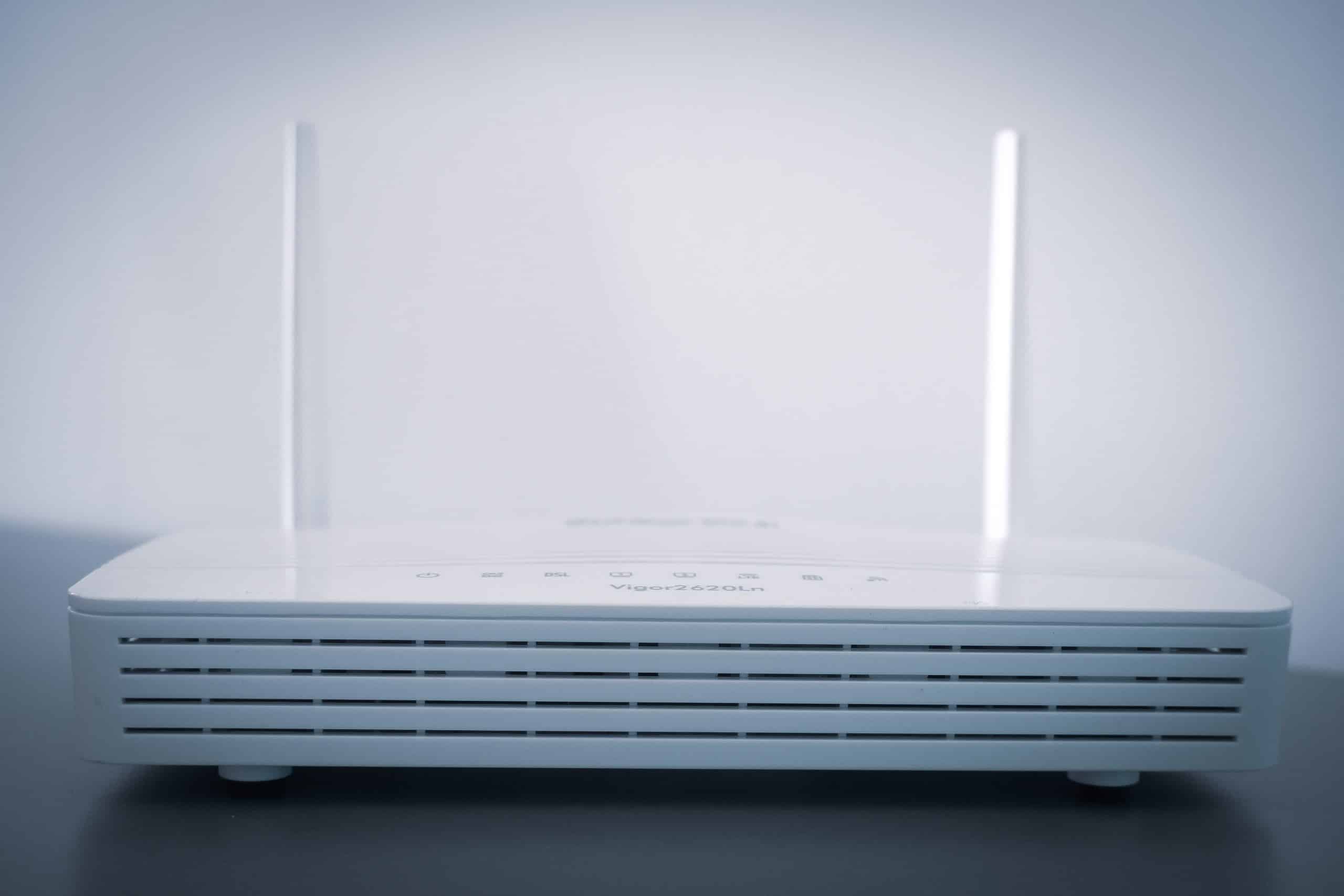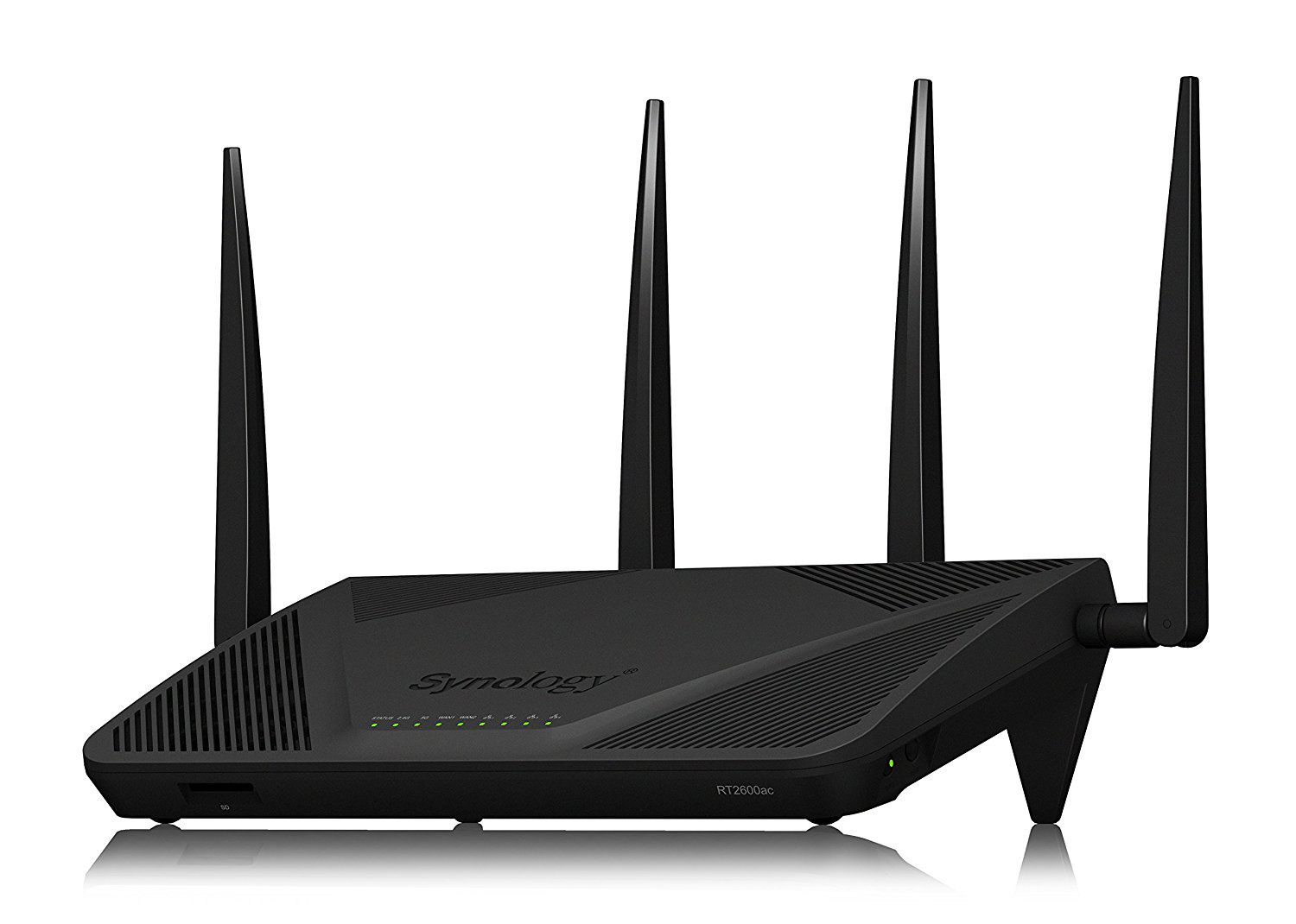Introduction
With the increasing demand for internet connectivity, it is essential to understand the difference between a modem and a wireless router. Both play critical roles in establishing a reliable and efficient internet connection, but they serve different functions and have distinct features. In this article, we will delve into the definitions of a modem and a wireless router, explore their basic functions, and highlight the differences between the two.
A modem, short for modulator-demodulator, is a device that facilitates the transmission of digital data over a communication channel, such as a phone line or cable. It acts as a bridge between your internet service provider (ISP) and your computer or other connected devices. The primary function of a modem is to convert analog signals from your ISP into digital signals that your devices can understand, and vice versa.
On the other hand, a wireless router is a device that allows multiple devices to connect and communicate with each other using wireless signals. It acts as a central hub that creates a local area network (LAN) within your home or office. The main purpose of a wireless router is to provide wireless internet access to your devices, eliminating the need for physical cables or wires.
While both a modem and a wireless router are essential components for establishing internet connectivity, they serve distinct functions. A modem is responsible for connecting your devices to the internet, while a wireless router allows for wireless connectivity within your network.
Now that we have a basic understanding of what a modem and a wireless router are, let’s dive deeper into their specific functions and explore the differences between them. By the end of this article, you will be equipped with the knowledge to make an informed decision when it comes to choosing the right device for your internet needs.
Definition of Modem
A modem, short for modulator-demodulator, is a crucial device that connects your computer or other devices to the internet. It serves as a communication bridge between your internet service provider (ISP) and your devices, enabling the transmission of digital data over a communication channel, such as a phone line or cable.
At its core, a modem’s primary function is to convert analog signals from your ISP into digital signals that your devices can understand, and vice versa. When you request a webpage or send an email, the modem translates the digital data from your device into a format that can be transmitted over the communication channel. Similarly, it decodes the analog signals received from the ISP into digital data that your devices can process.
Modems come in various types and technologies, including DSL modems, cable modems, and fiber optic modems. Each type is designed to work with specific internet connections and has different speeds and capabilities. For instance, DSL modems are used for connecting to the internet via a phone line, cable modems are used for cable internet connections, and fiber optic modems are used for high-speed fiber optic connections.
Aside from facilitating internet connectivity, modems also often include additional features such as built-in Wi-Fi capabilities or multiple Ethernet ports, allowing for wired connections to other devices. These features can be beneficial for connecting devices directly to the modem or creating a wired local area network (LAN) within your home or office.
Overall, a modem is an essential device that provides the necessary link between your ISP and your devices, enabling the seamless transmission of data over the internet. Without a modem, it would be impossible to access the internet and utilize the vast array of online services and resources available in today’s digital age.
Definition of Wireless Router
A wireless router is a device that creates a local area network (LAN) and enables multiple devices to connect and communicate with each other using wireless signals. It serves as a central hub for your network, providing wireless internet access to your devices without the need for physical cables or wires.
Wireless routers offer a wide range of features and functionalities to enhance your internet connectivity experience. They typically include one or more antennas to transmit and receive wireless signals, ensuring a stable and reliable connection throughout your home or office.
One of the primary functions of a wireless router is to provide wireless internet access by creating a Wi-Fi network. This allows your devices, such as smartphones, laptops, and tablets, to connect to the internet without the limitations of physical connections. The router receives the internet data from the modem and wirelessly distributes it to the connected devices within the network.
In addition to wireless internet access, a wireless router often includes features such as network security protocols, parental controls, guest networks, and Quality of Service (QoS) settings. These features allow you to customize and optimize your network, ensuring security, managing bandwidth, and controlling access to your network.
Wireless routers also come with Ethernet ports that allow you to connect devices directly via cables if needed. This can be useful for devices that require a stable and high-speed connection, such as gaming consoles or smart TVs.
It is important to note that a wireless router relies on a modem to establish an internet connection. Without a modem, a router alone cannot provide internet connectivity.
Overall, a wireless router plays a crucial role in creating a wireless network within your home or office, enabling seamless internet access for your devices. It offers a range of features to enhance and customize your network, ensuring a secure, reliable, and efficient internet experience.
Basic Functions of Modem
A modem, as a vital component of your internet connection, performs several fundamental functions to ensure the seamless transmission of data between your devices and the internet. Let’s explore these basic functions of a modem:
- Signal Conversion: The primary function of a modem is to convert analog signals from your internet service provider (ISP) into digital signals that your devices can understand, and vice versa. When you send a request or receive data from the internet, the modem takes the digital information from your device and converts it into analog signals suitable for transmission over the communication channel, such as a phone line or cable. On the receiving end, the modem converts the analog signals received from the ISP back into digital data that your devices can process.
- Establishing Connection: Modems establish a connection with your ISP, allowing you to access the internet. Depending on your type of internet connection, whether it is a DSL, cable, or fiber optic connection, the modem communicates with the ISP’s network infrastructure to establish a connection and authenticate your device.
- Protocol Interpretation: Modems interpret and adhere to various communication protocols to enable the exchange of data between your devices and the internet. Popular communication protocols include TCP/IP (Transmission Control Protocol/Internet Protocol), PPP (Point-to-Point Protocol), and DSL (Digital Subscriber Line) protocols. The modem ensures that the data transmitted over the communication channel follows the correct protocol, facilitating efficient and reliable data transfer.
- Data Compression and Error Correction: Modems often employ data compression and error correction techniques to optimize data transmission. Data compression reduces the size of files or data packets, allowing for faster transmission, while error correction algorithms detect and correct errors that may occur during transmission, ensuring the integrity of the data being sent or received.
- Connection Sharing: Some modems include additional features like built-in routers or multiple Ethernet ports, allowing for connection sharing. This enables you to connect multiple devices directly to the modem or create a wired local area network (LAN). The modem acts as a central hub for these connected devices, providing internet access to each device.
These basic functions of a modem are essential in establishing and maintaining a smooth and reliable internet connection. The modem’s ability to convert signals, establish a connection, interpret protocols, employ data compression and error correction, and facilitate connection sharing makes it a critical component in the process of accessing and utilizing the vast resources and services available on the internet.
Basic Functions of Wireless Router
A wireless router serves as a central hub for creating a local area network (LAN) and providing wireless internet access to multiple devices. It performs several basic functions that are crucial for establishing a reliable and efficient wireless network. Let’s explore these basic functions of a wireless router:
- Wireless Connectivity: The primary function of a wireless router is to create a Wi-Fi network, allowing devices to connect to the internet wirelessly. It broadcasts wireless signals that can be detected and connected to by devices such as smartphones, laptops, and tablets. The router receives internet data from the modem and wirelessly distributes it to the connected devices within the network.
- Network Routing and Switching: A wireless router routes and switches data packets between devices within the network. It determines the most efficient path for data transmission, ensuring that information reaches its intended destination in the network in a timely manner.
- Security: Wireless routers play a crucial role in network security. They provide various security features and protocols, such as encryption and firewall settings, to protect your network from unauthorized access and potential cyber threats. These security measures help safeguard your sensitive data and ensure a secure online experience.
- Quality of Service (QoS) Management: Wireless routers often include QoS settings that allow you to prioritize certain types of network traffic. For example, you can prioritize video streaming or online gaming traffic to ensure a smooth and uninterrupted experience, even when other devices within the network are using bandwidth-intensive applications.
- Guest Networks: Many wireless routers offer the ability to set up guest networks, separate from the main network. This allows you to provide internet access to guests without compromising the security of your main network. Guest networks typically have limited access and can be password-protected to maintain privacy.
- Device Connectivity: Wireless routers are equipped with Ethernet ports, allowing you to connect devices directly via cables if a wired connection is necessary. This can be useful for devices that require a stable and high-speed connection, such as gaming consoles, smart TVs, or network printers.
These basic functions of a wireless router are essential for creating a wireless network, providing internet access to multiple devices, ensuring network security, managing network traffic, and facilitating device connectivity. The wireless router acts as a central hub that enables seamless communication between devices within the network, enhancing your overall internet experience and connectivity.
Comparison of Modem and Wireless Router
While a modem and a wireless router both play crucial roles in establishing an internet connection, they have distinct functions and features. Let’s compare these two devices to understand their differences:
- Function: The primary function of a modem is to establish a connection between your devices and the internet by converting analog signals from your internet service provider (ISP) into digital signals that your devices can understand. On the other hand, a wireless router creates a local area network (LAN) and provides wireless internet access to multiple devices within the network.
- Connectivity: A modem connects your devices to the internet, allowing you to access online resources and services. A wireless router, however, facilitates wireless connectivity within your network, providing internet access to multiple devices without the need for physical cables.
- Physical Connection: A modem typically requires a physical connection to your ISP’s network infrastructure, such as a phone line or cable. It acts as the interface between your devices and the ISP. On the other hand, a wireless router is connected to the modem and creates a wireless network, allowing devices to connect to the internet wirelessly.
- Network Creation: A modem does not create a network; it simply establishes a connection to the ISP. In contrast, a wireless router creates a local area network (LAN) within your home or office, enabling devices to communicate with each other and share resources.
- Features: Modems generally have limited features, focusing primarily on data transmission between your devices and the internet. Wireless routers, on the other hand, offer a wide range of features, such as network security protocols, guest networks, Quality of Service (QoS) settings, and more, enhancing the functionality and customization of your network.
- Dependency: A wireless router depends on a modem to establish an internet connection. Without a modem, a wireless router alone cannot provide internet connectivity. The modem acts as the gateway between your ISP and the router.
- Number of Devices: A modem typically connects to a single device, such as your computer or a router. Conversely, a wireless router allows for multiple devices to connect to the internet wirelessly, providing internet access throughout your home or office.
- Flexibility: While a modem is generally specific to the type of internet connection (DSL, cable, fiber optic) and your ISP, a wireless router can work with various types of modems and internet connections, providing flexibility in choosing your preferred internet service provider.
Understanding the comparison between a modem and a wireless router allows you to make informed decisions when setting up your internet connection. While a modem focuses on connecting your devices to the internet, a wireless router creates a wireless network and enhances network functionalities. By combining these two devices, you can establish a reliable and efficient internet connection, enabling seamless access to online resources and fostering communication between devices within your network.
Connectivity Differences
Connectivity is a key aspect to consider when comparing a modem and a wireless router. While both devices are essential for establishing internet connectivity, they differ in terms of the connections they enable. Let’s explore the connectivity differences between a modem and a wireless router:
A modem serves as the bridge between your devices and your internet service provider (ISP). Its primary function is to establish a connection to your ISP’s network infrastructure, allowing you to access the internet. Modems typically require a physical connection, such as a phone line or cable, to establish this connection. The modem converts the signals from your ISP into digital signals that your devices can understand and vice versa. With a modem, you can connect a single device, like a computer or a router, directly to the internet.
On the other hand, a wireless router creates a local area network (LAN) within your home or office. It enables wireless connectivity, allowing multiple devices to connect to the network and access the internet without the need for physical cables. A wireless router receives the internet data from the modem and wirelessly distributes it to the connected devices within the network. This means that devices equipped with wireless capabilities, such as smartphones, laptops, tablets, and smart home devices, can connect to the internet without the limitations of physical connections. The wireless router acts as a central hub, ensuring that all connected devices can communicate and share resources within the network.
The connectivity differences between a modem and a wireless router are crucial in determining how devices in your home or office can access the internet. A modem allows for direct connection to the internet using a physical cable, while a wireless router enables wireless connectivity and facilitates communication between devices within your network. It is worth noting that a wireless router relies on a modem to establish an internet connection. Therefore, the modem’s connectivity options, such as DSL, cable, or fiber optic, indirectly affect the connectivity capabilities of the wireless router.
By understanding the connectivity differences between a modem and a wireless router, you can ensure that your devices have the appropriate connection to access the internet, whether through a physical cable or wireless connectivity. Whether you need a direct, wired connection or the flexibility and convenience of wireless connectivity, choosing the right combination of a modem and a wireless router is crucial to meet your specific internet connectivity needs.
Speed Differences
When it comes to internet connectivity, speed is a critical factor to consider. Both a modem and a wireless router can impact the speed of your internet connection. Let’s explore the speed differences between these two devices:
A modem plays a significant role in determining your internet speed. The speed of your internet connection is primarily dependent on the type of modem you have and the internet service plan provided by your ISP. Different types of modems have varying capabilities and speed limits. For example, DSL modems are commonly used for standard broadband connections and may have lower maximum speeds compared to cable modems or fiber optic modems. The speed of a modem is typically measured in terms of download and upload speeds, expressed in Mbps (megabits per second). It is important to check with your ISP to ensure that your modem supports the desired speed for your internet plan.
On the other hand, a wireless router does not directly impact the internet speed provided by your ISP. However, it can affect the speed and performance of your wireless network within your home or office. The wireless router’s capabilities, such as its Wi-Fi standard and the number of antennas, affect the speed and coverage range of the wireless signal. If you have multiple devices simultaneously connected to the wireless network or if you are using bandwidth-intensive applications like video streaming or online gaming, the performance of the wireless router can determine the speed at which data is transferred between your devices and the router.
Additionally, the physical distance between your wireless devices and the wireless router can also impact the speed and strength of the wireless signal. Walls, obstacles, and interference from other electronic devices can weaken the signal, resulting in decreased speed and performance. To optimize wireless speeds, it is important to position your wireless router in a central location and minimize signal interference.
It is worth noting that the overall internet speed experienced by a device connected to a wireless network may be lower than the maximum speed provided by the modem due to factors like network congestion and signal interference. The speed of your internet connection is a combination of the capabilities of your modem, the quality and speed of your internet plan, and the performance of your wireless router.
When evaluating the speed differences between a modem and a wireless router, it is important to consider both factors. While the modem’s capabilities determine the maximum speed provided by your ISP, the wireless router affects the speed and performance of your wireless network within a limited range. By ensuring that both the modem and the wireless router are capable of delivering the desired speeds, you can optimize your internet experience and enjoy fast and reliable connectivity.
Security Differences
When it comes to internet connectivity, security is of utmost importance. Both a modem and a wireless router play crucial roles in maintaining the security of your network. Let’s explore the security differences between these two devices:
A modem primarily focuses on establishing the connection between your devices and your internet service provider (ISP). While modems may have basic security features, such as password authentication for connecting to the ISP’s network, they generally do not provide robust security measures for your entire network. The modem’s primary function is to convert signals and ensure the transmission of data between your devices and the internet.
On the other hand, a wireless router offers more advanced security features to protect your network and connected devices. Wireless routers provide various security protocols, such as WPA2 (Wi-Fi Protected Access II), to encrypt wireless data transmissions and prevent unauthorized access. Encryption ensures that data sent between devices and the wireless router is encoded and cannot be easily intercepted or deciphered by potential attackers.
In addition to encryption, wireless routers often include firewall features to monitor incoming and outgoing network traffic. Firewalls control and block unauthorized access attempts, protecting your network from malicious activities. They can also provide network address translation (NAT), which hides your devices’ IP addresses from external networks, adding an additional layer of security.
Another security feature commonly found in wireless routers is the ability to set up guest networks. With a guest network, you can provide internet access to visitors without giving them direct access to your main network. This isolation ensures that guests cannot access sensitive resources or interfere with your main network’s security.
It is important to note that the security of your wireless network also depends on your actions. It is recommended to change the default login credentials of your wireless router and use strong, unique passwords. Regularly updating the firmware of your router ensures that you have the latest security patches and features. Additionally, you should be cautious about connecting to public Wi-Fi networks, as they may not provide the same level of security as your own wireless network at home or in the office.
Overall, while a modem focuses on establishing the connection between your devices and the internet, a wireless router offers advanced security features to protect your network. By ensuring that your wireless router has strong encryption, firewall protection, and guest network capabilities, and by practicing good security habits, you can enhance the security of your network and safeguard your sensitive data and devices from potential threats.
Cost Differences
When choosing internet connectivity devices, cost is an important factor to consider. Both a modem and a wireless router have different cost structures and require varying levels of investment. Let’s explore the cost differences between these two devices:
A modem typically comes as part of the internet service package provided by your ISP. In many cases, you can lease the modem from your ISP for a monthly fee. This option allows you to avoid the upfront cost of purchasing a modem. However, leasing a modem can result in higher costs in the long run, as you will continue paying the monthly fee for the duration of your internet service contract. On the other hand, purchasing a modem upfront allows you to have full ownership and control, and it may be a more cost-effective option if you plan to use the same modem for an extended period or switch ISPs in the future.
Wireless routers, on the other hand, are typically standalone devices that need to be purchased separately. The cost of a wireless router can vary depending on the brand, features, and capabilities. Basic routers without advanced security features and high-speed capabilities tend to be more affordable, while routers with advanced features, higher speed capabilities, and expanded coverage range may be more expensive.
It is worth noting that investing in a high-quality wireless router can provide long-term value and performance. Reliable routers with advanced security features and faster speed capabilities can improve your internet experience, allow for smoother device connectivity, and provide better overall performance for streaming, gaming, and other bandwidth-intensive activities.
When considering the cost of a modem and a wireless router, it is important to factor in the long-term savings and performance benefits. While the upfront cost of purchasing a modem and a wireless router may be higher, owning your equipment can save you money in the long run compared to the ongoing monthly fees associated with leasing a modem from your ISP. Additionally, investing in a higher-quality wireless router can provide better performance and security, potentially eliminating the need for future upgrades.
Another cost consideration is the potential need for additional devices. For example, if you require multiple wired connections, you may need to invest in Ethernet switches to expand the number of available ports. Similarly, if you have a large home or office, you may need to invest in additional access points or mesh Wi-Fi systems to ensure reliable and seamless coverage throughout the space.
Ultimately, the cost of a modem and a wireless router can vary depending on your specific needs, preferences, and budget. It is important to weigh the upfront costs, ongoing fees, and long-term value to make an informed decision that aligns with your budget and provides the desired performance and functionality for your internet connectivity.
Conclusion
Understanding the differences between a modem and a wireless router is essential in establishing a reliable and efficient internet connection. While a modem serves as the bridge between your devices and your internet service provider (ISP), a wireless router creates a local area network (LAN) and provides wireless internet access within your network. Both devices play crucial roles, but they have distinct functions and features.
A modem’s primary function is to establish a connection to your ISP, converting analog signals into digital signals that your devices can understand. It ensures that data can be transmitted between your devices and the internet. On the other hand, a wireless router enables wireless connectivity within your network, creating a Wi-Fi network that allows multiple devices to connect and share resources without the need for physical cables.
These devices also differ in terms of their functionalities. While modems focus primarily on establishing the connection, wireless routers offer a range of features such as security protocols, guest networks, and Quality of Service (QoS) settings, enhancing the functionality and customization of your network.
Connectivity is another key aspect to consider. A modem connects your devices to the internet, utilizing a physical connection such as a phone line or cable. In contrast, a wireless router creates a wireless network, allowing devices to connect to the internet wirelessly within a limited range from the router.
Security is crucial for protecting your network and devices. While modems may have basic security features, wireless routers offer advanced security protocols, firewall settings, and guest network options. These features help safeguard your network from unauthorized access and potential cyber threats.
Cost is also an essential factor when comparing a modem and a wireless router. Modems are often leased from your ISP or purchased upfront, while wireless routers are standalone devices that need to be purchased separately. It is important to consider the long-term savings and performance benefits when making your decision.
In conclusion, a modem and a wireless router are both essential components in establishing your internet connectivity. A modem connects your devices to your ISP, while a wireless router creates a wireless network for devices to connect within your network. By understanding the functions, connectivity, security, and cost differences between these two devices, you can make informed decisions to create a reliable and secure internet connection that meets your specific needs.







